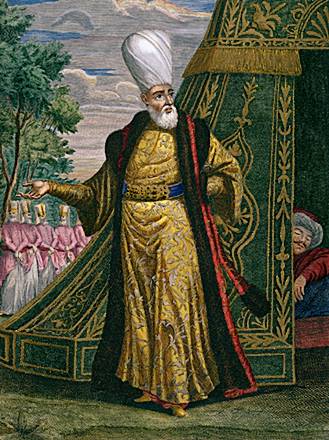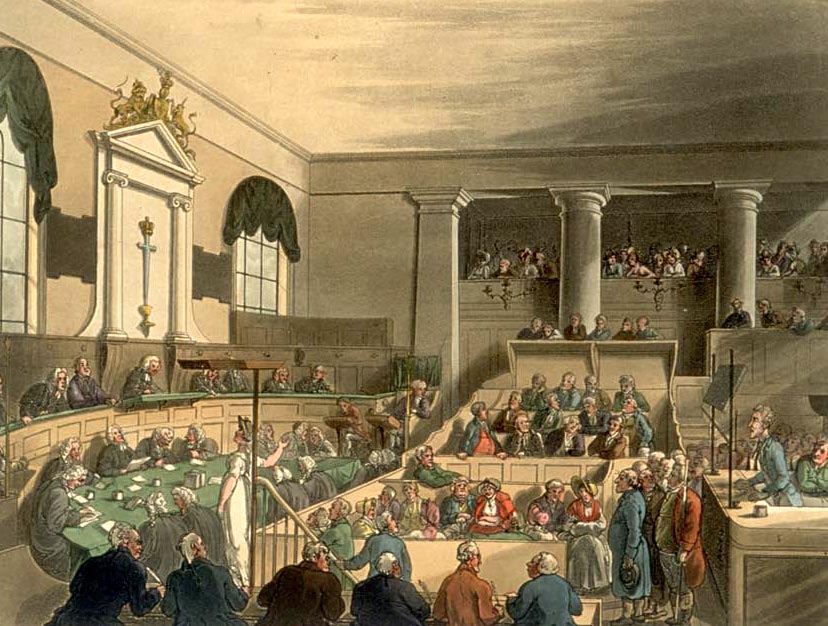|
Agha (Ottoman Empire)
Agha (; ; ; "chief, master, lord") is an honorific title for a civilian or officer, or often part of such title. In the Ottoman times, some court functionaries and leaders of organizations like bazaar or the janissary units were entitled to the ''agha'' title. In rural communities, this term is used for people who own considerable lands and are influential in their community. Regardless of a rural community, this title is also used for any man who is influential or respected. Etymology The word ''agha'' entered English from Turkish, and the Turkish word comes from the Old Turkic ''aqa'', meaning "elder brother". It is an equivalent of Mongolian word ''aqa'' or ''aka''. Other uses "Agha" is nowadays used as a common Persian honorific title for men, the equivalent of "mister" in English. The corresponding honorific term for women is khanum which is also of Turkic origin. However, the title is considered a baron in comparison to European nobility.Imperial, royal and noble r ... [...More Info...] [...Related Items...] OR: [Wikipedia] [Google] [Baidu] |
Yeniceri Aga
A janissary (, , ) was a member of the elite infantry units that formed the Ottoman sultan's household troops. They were the first modern standing army, and perhaps the first infantry force in the world to be equipped with firearms, adopted during the reign of Murad II (r. 1421–1444, 1446–1451). The corps was established under either Orhan or Murad I, and dismantled by Mahmud II in 1826. Janissaries began as elite corps made up through the ''devşirme'' system of Ghilman, child levy enslavement, by which Ethnic groups in Europe, indigenous European Christians, Christian boys, chiefly from the Balkans, were taken, levied, subjected to forced circumcision and Forced conversion#Islam, forced conversion to Islam, and incorporated into the Ottoman army in the 15th–19th centuries, Ottoman army. They became famed for internal cohesion cemented by strict discipline and order. Unlike typical History of slavery in the Muslim world, slaves, they were paid regular salaries. Forbidden ... [...More Info...] [...Related Items...] OR: [Wikipedia] [Google] [Baidu] |
Kapi Agha
The Kapi Agha (, " Agha of the Gate"), formally called the Agha of the Gate of Felicity (''Bâbüssaâde ağası''), was the head of the eunuch servants of the Ottoman Seraglio until the late 16th century, when this post was taken over by the Kizlar Agha. In juxtaposition with the latter office, also known as the Chief Black Eunuch as its holders were drawn from Black African slaves, the Kapi Agha is also known as the Chief White Eunuch. History and functions As his title implies, the Kapi Agha controlled the Gate of Felicity that separated the Outer Court ('' Birûn'', where state affairs were conducted), from the Inner Court (''Enderûn'') and the Sultan's private apartments in the Topkapı Palace. The Agha occupied an office to the right of the gate and had the duty of controlling entrance to the Inner Court and of transmitting the Sultan's orders to his officials, rendering him, in the words of the Ottomanist Halil İnalcık, "the sole mediator between the Sultan and the world ... [...More Info...] [...Related Items...] OR: [Wikipedia] [Google] [Baidu] |
Military Ranks Of The Ottoman Empire
The military ranks of the Ottoman Empire may be visually identified by the military insignia used during the Military of the Ottoman Empire. Army ranks Classic Army * Agha (Ottoman Empire), Aghas were commanders of the different branches of the military services, like "azap agha", "besli agha", "janissary agha", for the commanders of azaps, beslis, and janissaries, respectively. This designation was given to commanders of smaller military units, too, for instance the "bölük agha", and the "ocak agha", the commanders of a "bölük" (Company (military), company) and an "ocak" (troops) respectively. * Boluk-bashi was a commander of a "bölük", equivalent with the rank of Captain (land), captain. * Chorbaji (Turkish for "soup server") was a commander of an orta (regiment), approximately corresponding to the rank of colonel () today. In seafaring, the term was in use for the boss of a ship's crew, a role similar to that of boatswain. Modern Army Military personnel in the Ottoma ... [...More Info...] [...Related Items...] OR: [Wikipedia] [Google] [Baidu] |
Titles In Lebanon
A title is one or more words used before or after a person's name, in certain contexts. It may signify their generation, official position, military rank, professional or academic qualification, or nobility. In some languages, titles may be inserted between the first and last name (for example, in German or clerical titles such as Cardinal in Catholic usage – Richard Cardinal Cushing). Some titles are hereditary. Types Titles include: * Honorific titles or styles of address, a phrase used to convey respect to the recipient of a communication, or to recognize an attribute such as: ** Imperial, royal and noble rank ** Academic degree ** Social title, prevalent among certain sections of society due to historic or other reasons. ** Other accomplishment, as with a title of honor * Title of authority, an identifier that specifies the office or position held by an official Titles in English-speaking areas Common titles * Mr. – All males * Ms. – Adult women * Mrs. – M ... [...More Info...] [...Related Items...] OR: [Wikipedia] [Google] [Baidu] |
Ottoman Titles
This is a list of titles and appellations used in the Ottoman Empire. In place of surnames, Muslims in the Empire carried titles such as "Sultan", " Paşa", "Ağa", "Hoca", "Bey", " Hanım", " Efendi", etc. These titles either defined their formal profession (such as Pasha, Hoca, etc.) or their informal status within the society (such as Bey, Agha, Hanım, Efendi, etc.). Later, family surnames were made mandatory in Turkey by the 1934 Surname Law. Usage by Ottoman royalty The sovereigns' main titles were Sultan, Padishah (Emperor) and Khan; which were of various origins such as Arabic, Persian and Turkish or Mongolian, respectively. His full style was the result of a long historical accumulation of titles expressing the empire's rights and claims as successor to the various states it annexed or subdued. Beside these imperial titles, Caesar of Rome was among the important titles claimed by Sultan Mehmed II after the conquest of Constantinople. The title sultan (), originally ... [...More Info...] [...Related Items...] OR: [Wikipedia] [Google] [Baidu] |
Government Of The Ottoman Empire
The Ottoman Empire developed over the years as a despotism with the List of sultans of the Ottoman Empire, Sultan as the supreme ruler of a centralized government that had an effective control of its Administrative divisions of the Ottoman Empire, provinces, officials and inhabitants. Wealth and rank could be inherited but were just as often earned. Positions were perceived as List of Ottoman titles and appellations, titles, such as viziers and ''Agha (Ottoman Empire), aghas''. Military of the Ottoman Empire, Military service was a key to many problems. The expansion of the Empire called for a systematic administrative organization that developed into a dual system of military ("Central Government") and civil administration ("Provincial System") and developed a kind of separation of powers: higher executive functions were carried out by the military authorities and judiciary, judicial and basic administration were carried out by civil authorities. Outside this system were vario ... [...More Info...] [...Related Items...] OR: [Wikipedia] [Google] [Baidu] |
Court Titles
A court is an institution, often a government entity, with the authority to adjudicate legal disputes between parties and administer justice in civil, criminal, and administrative matters in accordance with the rule of law. Courts generally consist of judges or other judicial officers, and are usually established and dissolved through legislation enacted by a legislature. Courts may also be established by constitution or an equivalent constituting instrument. The practical authority given to the court is known as its jurisdiction, which describes the court's power to decide certain kinds of questions, or petitions put to it. There are various kinds of courts, including trial courts, appellate courts, administrative courts, international courts, and tribunals. Description A court is any person or institution, often as a government institution, with the authority to adjudicate legal disputes between parties and carry out the administration of justice in civil, criminal ... [...More Info...] [...Related Items...] OR: [Wikipedia] [Google] [Baidu] |
Silahdar Agha
The Silahdar Agha was a palace office of the Ottoman Empire, denoting the principal page of the Ottoman Sultan. As such its holders were persons of great influence, and provided many senior officials and even Grand Viziers. The title derives from the Persian language, Persian ''silahdar'', meaning "arms-bearer", a title originally adopted by the Seljuks to denote one of the Sultan's principal aides, who bore his weapon and was responsible for the army's military arsenal. The title was a combination of two words ''Silahdar'' meaning "arms-bearer" and ''Agha (title), Agha'', a honorific title. The Ottomans inherited this title and elevated it further: by the time of Mehmed II () the Silahdar Agha was the second-in-command of the Sultan's Privy Chamber (''Hass Oda'') underneath the ''hass oda bashi''. The Privy Chamber in turn was the senior of the four chambers making up the palace's Inner Service (''Enderûn'') under the Kapi Agha. The Silahdar Agha's duties in the palace involved ... [...More Info...] [...Related Items...] OR: [Wikipedia] [Google] [Baidu] |
Kizlar Agha
The Kizlar Agha (, , ), formally the Agha of the House of Felicity (, ), was the head of the eunuchs who guarded the Ottoman Imperial Harem in Constantinople. Established in 1574, the post ranked among the most important in the Ottoman Empire until the early 19th century, especially after the stewardship of the two holy cities of Mecca and Medina and the supervision of all waqfs (charitable foundations) in the Empire came under his purview. The wealth thus amassed, the proximity to the sultan, and the role the harem ladies played in court intrigues (" Sultanate of Women") meant that its occupant had considerable political influence; several kızlar aghas were responsible for the downfall of grand viziers and the accession of sultans. Soon after its creation and until its abolition, close to the abolition of the Ottoman sultanate, the post came to be occupied by Black African eunuch slaves, and hence is also referred to as the Chief Black Eunuch. History The post of the kız ... [...More Info...] [...Related Items...] OR: [Wikipedia] [Google] [Baidu] |
Agha Of The Janissaries
The Agha of the Janissaries or Janissary Agha (; ) was a top Ottoman Empire, Ottoman military official and courtier, and the commander of the Janissary corps. Apart from the commander-general of the entire corps, the title of "Agha of the Janissaries" was also borne by the commanders of provincial garrisons of Janissaries. Appointment and duties The Agha (title), Agha was chosen by the Ottoman Sultan, but was not necessarily himself a Janissary. To secure the often uncertain loyalty of the corps, Bayezid II () stopped the practice of appointing the (the commander of the regiments) to the post, and instead nominated a member of his own household to the post. These were usually pages who had been recruited, like the Janissaries, via the system, but then had been educated in the palace school, then proven their ability in the inner, private palace service (), before being appointed to senior posts in the palace's outer service (). At the same time, Bayezid founded the () regiment ... [...More Info...] [...Related Items...] OR: [Wikipedia] [Google] [Baidu] |




